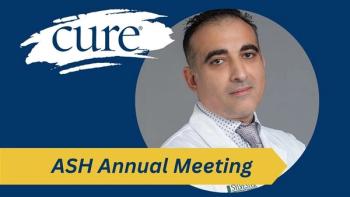
Big Change Is Coming for the Treatment of Triple-Negative Breast Cancer
The treatment landscape of triple-negative breast cancer is vastly changing. CURE spoke with Joyce A. O’Shaughnessy, M.D. about what to expect.
New agents, such as immunotherapy and PARP inhibitors, are being explored to treat triple-negative breast cancer (TNBC), transforming the treatment landscape for the disease.
At the 2016 San Antonio Breast Cancer Symposium, treatment with Keytruda (pembrolizumab) continued to show a consistent durable benefit with an additional year of follow-up for heavily pretreated patients with recurrent PD-L1—positive TNBC, according to findings from the phase 1b KEYNOTE-012 trial.
At a median follow-up of 10.7 months, the median progression-free survival (PFS) was 1.9 months, and the 12-month PFS rate was 17.8 percent. The median overall survival (OS) was 11.3 months and the 12-month OS rate was 47.1 percent.
What are some of the key topics currently being discussed in the field of breast cancer?
In an interview with CURE, Joyce A. O’Shaughnessy, M.D., chair of Breast Cancer Research and the Celebrating Women Chair in Breast Cancer at Baylor-Sammons Cancer Center, Texas Oncology, and chair of The US Oncology Network, addressed some of the key issues in breast cancer and shared her expert insight on where TNBC treatment is headed based on recent findings.We’re talking about the estrogen receptor (ER)—positive patient — particularly focusing on the new data coming out with extended adjuvant endocrine therapy — as well as the premenopausal ER-positive patient and how to optimize that. Then, in metastatic breast cancer, there are new agents such as ribociclib. Of course, we have been using Ibrance (palbociclib). How do we sequence Afinitor (everolimus) for patients? There are a lot of new data in the ER-positive space.
In the HER2-positive space, we [discussed] new data emerging in the preoperative setting, as well as in the metastatic setting. There are new exciting data on using Kadcyla (T-DM1; trastuzumab emtansine) for brain metastases, for example.
In the curative setting, we are really focused on optimizing our chemotherapy at the moment and determining the role of anthracyclines and platinum-based agents. In the metastatic setting, what are the new agents coming along? What really holds promise? How will we understand the subsets of TNBC?
In the HER2-positive space, an exciting development hopefully will be coming up in 2017 with neratinib from the ExteNET study. That is the extended adjuvant therapy in the HER2-positive setting for patients who have already finished up their one year of adjuvant Kadcyla, and then patients might benefit from another year of the oral inhibitor neratinib.
That was a positive trial that showed a substantial improvement in outcomes, particularly in the ER-positive, HER2-positive patients who are at higher risk. That data will be going to the FDA very soon, [and we will find out] whether it will be approved for high-risk HER2-positive patients who still have substantial risk even after they have had their HER2-targeted therapy.
There is a lot of focus on new surgical and radiation therapy techniques with local controlled data. This is always a moving field because we are going toward less surgery, or more preoperative therapy. How do we optimize surgery and radiation therapy for patients who are getting sentinel biopsy or preoperative therapy?
There are also some novel diagnostics and new molecular profiles being used in the ER-positive patient. Who needs chemotherapy, and who does not? What about some of the new assays to try to understand who will benefit from extended adjuvant endocrine therapy?
What is important to note in the area of TNBC?
How about some of these new mutations we're finding, such as…theESR1 mutation, using circulating tumor DNA? Is that at all clinically useful at this time? It’s really covering local control, ER-positive, HER2-positive, triple-negative, and some of the novel diagnostics. We are really covering the waterfront.TNBC is in rapid evolution, and we are going to see some stunning progress in the next few years, fortunately. What are the current data we have with carboplatin or platinum-based agents? What about capecitabine in high-risk patients? Our chemotherapy agents are old friends, but are they really useful in the curative setting?
With TNBC, in terms of novel agents, there are two areas in which those are being developed in the preoperative setting. This includes the important I-SPY series of trials that are yielding very interesting results around preoperative neratinib, even in the TNBC population. These are very intriguing data that need follow-up studies that we’re planning to do, as well as AKT inhibitors, which hold great promise. The PD-1/PD-L1 agents are very rapidly moving into the neoadjuvant space. We will also await very important data with the PARP inhibitor veliparib in TNBC.
There are a number of data sets that are very important in the metastatic setting about how to optimize chemotherapy. What about the immunotherapy agents Tecentriq (atezolizumab) and Keytruda —what is going on there? What do we anticipate there? What about that androgen receptor in TNBC? That’s a really important target; there’s no question about it.
Will chemotherapy continue to have a role in TNBC?
There is a question now of getting larger data sets to bring to patients. The PARP inhibitors, particularly for the germline BRCA1/2 mutant population, are very important. There is no doubt in my mind that they will make a very important impact for them. Lastly, there are a couple really interesting antibody-drug conjugates, so we are going to bring novel cross-resistant therapies to patients. We are getting there. What are most important are those that are promising enough to move up into the neoadjuvant setting, because that’s going to bring the most impact in terms of changing the natural history of the disease.In TNBC, we do need to combine our best chemotherapy agents with these targeted therapies. A good example of that is what we are seeing in the anti—PD-1/PD-L1 agents as monotherapy. Keytruda and Tecentriq, in very heavily pretreated patients, have about a 20 percent response rate, and a clinical benefit rate of 30 percent or so.
However, when you move them up earlier into the course of metastatic disease and combine them with chemotherapies such as nab-paclitaxel — and there are pilot trials adding Keytruda and Tecentriq to preoperative standard chemotherapy — for locally advanced TNBC, you start to see dramatically more activity. We will continue to utilize chemotherapy for TNBC whether it’s in the curative setting or metastatic setting. We are going to pare it down over time to our most important agents that work the best with our targeted therapies.





